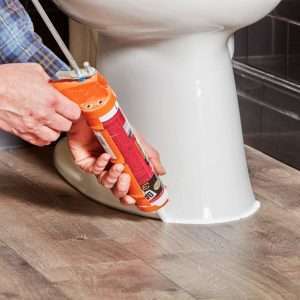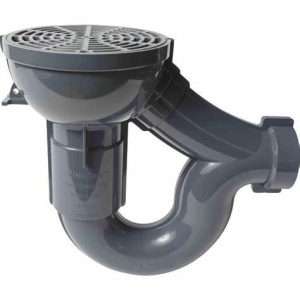Don’t Flush Your Money Away: The Value of a Sewer Scope Inspection
If you had a home inspection on an older home, your home inspector most likely suggested having a sewer scope inspection completed. The value of a sewer scope is priceless, I mean who wants to wake up and can’t flush the toilet or have some sewage back up into their home? I cringe at the thought of finding something like that in my home and I see plenty of things as an inspector so how do you think you would feel? So let’s jump into it this guide discussing sewer scoper inspections.
What Is A Sewer Scope Inspection?
A sewer scope inspection is a process used to visually inspect the inside of a sewer line. This is typically done by using a flexible, waterproof camera attached to a long cable, which is inserted into the sewer line through an access point such as a cleanout or vent stack.
The camera transmits live video footage of the inside of the sewer line, which is then viewed on a monitor by a trained technician. The technician can then identify any issues such as blockages, cracks, damage, or leaks, and assess the overall condition of the sewer line. This information can then be used to plan for repairs or replacement of the sewer line if necessary. Sewer scope inspections are often done as part of regular maintenance, before buying or selling a home or diagnosing a sewer problem.
Purpose of A Sewer Scope Inspection
- Identifying blockages or obstructions in the sewer line
- Detecting cracks, breaks, or damage to the sewer line
- Locating the source of leaks or water infiltration in the sewer line
- Assessing the condition and structural integrity of the sewer line
- Planning for future repairs or replacement of the sewer line
- Confirming compliance with local building codes and regulations
- Identifying potential health and safety hazards.
- Finding the root cause of plumbing issues such as recurring clogs or slow drains.
- Checking for invasive tree roots in the sewer line
- Identifying potential issues before they become major problems and costly repairs.
Thinking about number 6, many homes have renovations that involve the plumbing and sometimes changes are made that are not in compliance with building codes. I remember one inspection where we found drainage issues within the home and suggested the client schedule a sewer scope inspection to evaluate further. The plumber found minor damage to the piping but the major issue was that the kitchen was moved from it’s orignal location and the new kitchen’s plumbing was not ventilated properly.
How Much Does A Sewer Inspection Cost?
The sewer scope inspection cost varies, such as the type of inspection, the length and condition of the sewer line, and the location of the property.
A basic sewer scope inspection price, typically costs between $150 and $350. This type of inspection uses a camera on a long cable to inspect the interior of the sewer line, and the technician will look for blockages, cracks, and other damage.A more extensive sewer inspection that includes a hydro jetting service, typically cost between $300 to $800. This service uses high-pressure water to clean the interior of the sewer line, and it can help to remove any blockages or debris.
A sewer line location service, which uses specialized equipment to locate the exact location of the sewer line, typically costs between $150 and $400.In some cases, when there is a need for excavation, the cost could increase significantly, it can range from $2,000 to $10,000 or more depending on the severity of the problem, the type of repair or replacement needed, and the location of the property.
What To Expect From A Sewer Scope Inspection Report
- A visual inspection of the entire sewer line: The technician will use a camera to inspect the interior of the sewer line, looking for any blockages, cracks, damage, or other issues.
- A detailed report of the findings: The technician will create a report that includes information about the condition of the sewer line, including any issues that were found during the inspection.
- Photos and/or video of the interior of the sewer line: The technician will take photos or video footage of the interior of the sewer line, which will be included in the report.
- A map or diagram of the sewer line: The report will include a map or diagram of the sewer line, showing the location of the access points, the direction of flow, and any issues that were identified during the inspection.
- Recommendations for repairs or replacement: If any issues were found during the inspection, the technician will provide recommendations for repairs or replacement of the sewer line.
- A detailed explanation of the cause of the problem: The report will include an explanation of the cause of the problem, such as a blocked pipe, a cracked pipe, tree root intrusion, etc.
- A summary of the overall condition of the sewer line: The report will include a summary of the overall condition of the sewer line, including any areas that are in need of repair or replacement.
- An estimate for the cost of repairs or replacement: If repairs or replacement are recommended, the report will include an estimate for the cost of the work.
- A mention of any potential safety hazards: If any potential safety hazards were identified during the inspection, they will be mentioned in the report, such as methane gas leaks.
- A certification of compliance with local regulations: If required, the report will include a certification of compliance with local regulations.
Summary: The Value of a Sewer Inspection
Sewer inspections are an important tool for maintaining the health and functionality of a sewer line. They allow for early detection of issues and provide valuable information that can be used to plan for repairs or replacement of the sewer line.
Regular sewer inspections can help to prevent costly repairs, minimize disruptions to sewer service, and ensure compliance with local regulations. It is recommended to schedule a sewer scope inspection at least once every two to five years, or more frequently if the sewer line is known to have issues or if there are concerns about the condition of the sewer line. If you suspect any issues with your sewer line, it is best to contact a professional plumber or sewer inspection company to schedule an inspection.






Pingback: Comfortable with the home inspection process? 1st Stop - GGR Home Inspections
Pingback: How Much Does a Home Inspection Cost ? August 2021 - GGR Home Inspections
Pingback: Shop for a Home with these 4 Major Components in Mind - GGR Home Inspections
Pingback: What do home inspections include? Quick Read
Pingback: Learn What Plumbing Vent Pipes On Roof Are For (2023 Guide) - GGR Home Inspections
Pingback: Types of Backsplash: What is Right For Your Kitchen